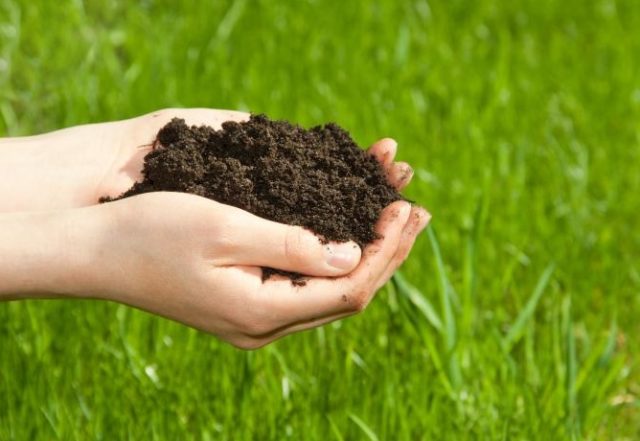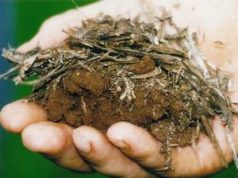Importance of Microbial Biomass in Soil Fertility and its Measurements
Soil microbial biomass is an important parameter linking the plants to soil. It comprises about 2-3% of the total organic carbon in the soil and recognized as an important source of nutrients to plants.
It is also a dynamic component of the soil associated with several functional properties of terrestrial ecosystem. It represents the fraction of the soil responsible for the energy and nutrient cycling and the regulation of organic matter transformation.
There is also very close relationship between soil microbial biomass, decomposition rate and nitrogen mineralization (Carter et al., 1982). It is also positively correlated with grain yield in organic farming and also contributes to soil structure and stabilization.
Thus there is immense importance of microbial biomass in soil fertility as well as in agriculture.
Definition: Soil microbial biomass is the living component of soil organic matter excluding soil animals and plant roots larger than 5X103 µm3 (Jenkinson and Ladd, 1981).
In other words it can be defined as the concentration of microbes in the soil. It is an important indicator of soil health. It is said that…..
| ½ of microbial biomass = 10 cm top soil |
Composition of microbial biomass:
Soil microbial biomass consists of bacteria, fungi, actinomycetes, protozoa etc. However, bacteria and fungi both are the dominant organisms with regards to biomass and metabolic activities. According to Sylvia et al., (1998), the numbers of microbes in soil are as follows:
| Microbial group | No. per gram of soil |
| Bacteria | 100,000,000-1,000,000,000 |
| Fungi | 100,000-1,00,000 |
| Actinomycetes | 1000-1,000,000 |
| Protozoa | 1000-100,00 |
Role of Soil Microbial Biomass:
Although it comprises less than 5% of organic matter in soil, it performs at least 3 critical functions for plant production in the ecosystem.
- It is a labile source of carbon (C), nitrogen (N), phosphorus (P), and sulfur (S)
- It is an immediate sink of C, N, P and S
- It is an agent of nutrient transformation and pesticide degradation.
In addition, microorganisms form symbiotic associations with roots, act as biological agents against plant pathogens, contribute towards soil aggregation (Angers et al. 1992), and participate in soil formation.
Importance of Microbial Biomass in Soil Fertility
The importance of microorganism in ecosystem functioning has led to an increased interest in soil microbial biomass. The importance of microbial biomass in soil fertility can be described in the following:
- As a source of nutrients
- As a sink of nutrients
- As an indicator of heavy metals and pesticides pollution
- As an indicator of soil quality.
Microbial Biomass: As A Source of Nutrients
- Source of potentially mineralisable nitrogen
- Source of available phosphorus and sulphur
Microbial Biomass: As A Sink of Nutrients
Grasslands, woodlands and forests contain substantial amounts of microbial biomass. For example, the average microbial biomass pool size is 20–50% higher in grasslands and forest soils than in arable soils, mainly because of the larger organic C inputs in the former.
Addition of easily metabolisable C to soil rapidly increases microbial biomass, often by several folds, and also incorporates nutrients into microbial biomass rapidly, often within a week of addition (Robertson et al. 1997).
However, such a microbial pool size is transient, and the level of microbial biomass a soil can sustain under a steady-state condition depends on the protective capacity of the soil, which is governed by a dynamic interaction between clay and clay aggregates, soil microbial biomass and soil organic matter (Hassink and Whitmore 1997), and possibly climate (Insam 1990).
The soil microbial biomass has important role in soil fertility can be established by the evidences of many workers like Anderson and Domsch (1985) indirectly measured the amount of nutrient elements in the microbial biomass of 26 soils.
The average amount of N and P stored in the vegetative cells of microflora of arable soil was estimated to be about 108 and 83 kg/ha respectively.
Jenkinson and Ladd (1981) determined biomass N and biomass P to be 95 and 11 kg/ha with a flux of 38 and 5 kg/ha/year, respectively. They found a close relationship between biomass N and plant uptake of N, similar relationship was found for P taking C/P ratio as 50. Witt et al. (2000) demonstrated a clear indication that biomass underwent a transition from sink to source of plant nutrients, flooded rice being the indicator crop.
Microbial Biomass: As An Indicator of Heavy Metals and Pesticides Pollution
Increasing disposal of sewage sludge on land has the potential to increase heavy metals in soil. There is thus concern about the long-term effects of additions of heavy metals in sewage sludge to soil.
It is believed that microbial biomass, being the living component of soil, can provide an early indication of the adverse effects of increasing concentrations of heavy metals and pesticides in soil.
The microbial biomass decreases faster as the heavy metal concentration increases. The microbial quotient decreases much faster than the total microbial biomass as the heavy metal concentration increases.
Microbial Biomass: As An Indicator of Soil Quality
Soil quality is the capacity of a specific kind of soil to function, within natural or managed ecosystem boundaries, to sustain plant and animal productivity, maintain or enhance water and air quality, and support human health and habitation (Karlen et al. 1997).
To evaluate soil quality, the capacity of the soil to function needs to be measured using appropriate indicators.
Microbial biomass performs 3 essential functions in soil. It is also sensitive enough to measure the changes due to the different land use and management such as virgin land brought under cultivation (Dalal and Mayer 1987), crop rotations (McGill et al. 1986), restoration (Staben et al. 1997) and heavy metal contamination (Brookes and McGrath 1984).
However, currently, microbial biomass does not provide benchmark, critical or threshold values against which soil quality can be evaluated. To overcome the problem, some microbial indices for soils of different microbial biomass contents have been developed, such as:
- a) Microbial quotient: it is the ratio of biomass C to total organic carbon.
- b) Metabolic quotient: microbial respiration rate per unit of microbial biomass. It is also known as specific respiratory rate.
Factors affecting the amount of Soil Microbial Biomass
- Temperature and moisture
- Soil matrix
- Land use
- Crop rotations
- Fertilizers and soil amendments
- Tillage practices
Methods to Estimate Soil Microbial Biomass
In the past, interest in microbial biomass assessment in soil has been limited by tedious, time consuming and unreliable techniques (direct microscopy, culture media) for enumeration of individual microbial communities.
Estimation of microbial biomass from actual enumeration of the whole suite of microorganisms (e.g. bacteria, fungi, actinomycetes, protozoa, nematodes) has been difficult because of incomplete extraction, inappropriate growth media, extremely variable growth habits of microorganisms in soil, and scant information on their biovolumes (Jenkinson 1988).
In the last 20 years, relatively rapid assessment of soil microbial biomass has been possible based on physiological, biochemical and chemical techniques (Horwath and Paul 1994). These methods can be broadly divided into-
- Direct methods
a) Phospholipid fatty acids (PLFAs) analysis
b) Adenosine triphosphate (ATP) analysis
- Indirect methods
a) Chloroform fumigation incubation (CFI) method
b) Chloroform fumigation extraction (CFE) method
c) Substrate-induced respiration (SIR) method
Out of these methods, Chloroform fumigation incubation (CFI) method and Chloroform fumigation extraction (CFE) method have been widely used to estimate microbial biomass in agricultural, pastoral and forestry systems, rehabilitation of disturbed lands, and pesticide and heavy metals polluted lands and materials.
Among the methods discussed above, CFE method is most popular and used extensively, because of its cheaper, faster and easier method for estimating soil microbial biomass.
Conclusion
Moreover, microbial biomass is a small but labile and living component of soil organic matter that is involved in most bio-geo-chemical processes in terrestrial ecosystem. It interacts with crop productivity by regulating nutrient availability as a source; determining soil carbon storage- sink; and contributing to the atmospheric CO2 from respiration. Thus it is the main agent that controls the flow of carbon and cycling of nutrient elements.
Critical evaluation of the significance of soil microbial biomass is hampered by the reliable measurement of microbial biomass, and simultaneous partitioning of its three major functions in soil.
However, as a routine analytical tool, it is limited by the cumbersome and time consuming measurements, lack of benchmarking values and interpretation, ambiguous relationship with productivity, and cost-effectiveness.
With increasing demand to monitor soil quality and protection of the environment, improved and rapid techniques, including molecular biotechniques, will be required to measure soil microbial biomass for its size of sink, source and rates of turnover.
Eventually, agricultural science will benefit and utilise soil microbial biomass as an analytical tool to produce abundant, economical, and clean food and fibre.
References :
Anderson, J. P. E., and Domsch, K. H. (1985). Determination of ecophysiological maintenance C requirements of soil microorganisms in a dormant state. Biology and Fertility of Soils 1, 81–89.
Brookes, P. C., and McGrath, S. P. (1984). Effects of metal toxicity on the size of the soil microbial biomass. Journal of Soil Science 35, 341–346.
Carter, M. R., and Rennie, D. A. (1982). Changes in soil quality under zero tillage farming systems: distribution of microbial biomass and mineralisable C and N potentials. Canadian Journal of Soil Science 62, 587–597.
Dalal, R. C., and Mayer, R. J. (1987). Long-term trends in fertility of soils under continuous cultivation and cereal cropping in Southern Queensland. VII. Dynamics of nitrogen mineralisation potentials and microbial biomass. Australian Journal of Soil Research 25, 461–472.
Hassink, J., and Whitmore, A. P. (1997). A model of the physical protection of organic matter in soils. Soil Science Society of America Journal 61, 131–139.
Horwath, W. R., and Paul, E. A. (1994). Microbial biomass. In ‘Methods of Soil Analysis’. Part 2. Microbiological and Biochemical Properties. (Eds R. W. Weaver et al.) pp. 754–773. (Soil Science Society of America: Madison, Wisconsin, USA.).
Insam, H. (1990). Are the soil microbial biomass and basal respiration governed by climatic regime? Soil Biology and Biochemistry 22, 525–532.
Jenkinson, D. S. (1988). Determination of microbial biomass carbon and nitrogen in soil. In ‘Advances in Nitrogen Cycling in Agricultural Ecosystems’. (Ed. J. R. Wilson.) pp. 368–386. (CAB International: Wallingford, UK.)
Jenkinson, D. S., and Ladd, D. S. (1981). Adenosine triphosphate and microbial biomass in soil. Soil Biology and Biochemistry 11, 521–527.
Karlen, D. L., Mausbach, M. J., Doran, J. W., Cline, R. G., Harris, R. F., and Schuman, G. E. (1997). Soil quality: a concept, definition and framework for evaluation. Soil Science Society of America Journal 61, 4–10.
McGill, W. B., Cannon, K. R., Robertson, J. A., and Cook, F. D. (1986). Dynamics of soil microbial biomass and water soluble carbon in Breton L after 50 years of cropping to two rotations. Canadian Journal of Soil Science 66, 1–19.
Robertson, F. A., Myers, R. J. K., and Saffigna, P. G. (1997). Nitrogen cycling in brigalow clay soils under pasture and cropping. Australian Journal of Soil Research 35, 1323–1339.
Staben, M. L., Bezdicek, D. F., Smith, J. L., and Fauci, M. F. (1997). Assessment of soil quality in conservation reserve program and wheat–fallow soils. Soil Science Society ofAmerica Journal 61, 124–130.
Sylvia, E. A., and Rees, R. M. (1998). Relationship between biomass nitrogen and nitrogen extracted by other nitrogen availability methods. Soil Biology and Biochemistry 26, 1213–1220.
Witt, J., O’Donnell, A. G., He, Z. L., and Syers, J. K. (2000). Fumigation–extraction method for the measurement of soil microbial biomass-S. Soil Biology and Biochemistry 26, 117–125.
By:
Shrila Das, Ruma Das, Sunanda Biswas, Mandira Barman
Scientist, Division of Soil Science and Agricultural Chemicals, ICAR-Indian Agricultural Research Institute, New Delhi-110012








